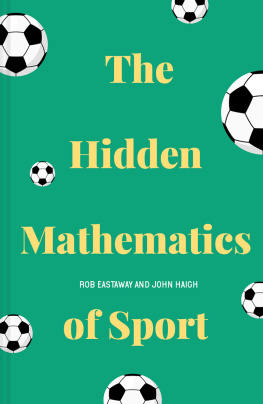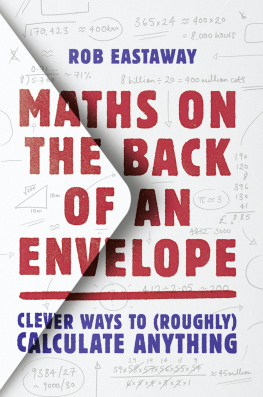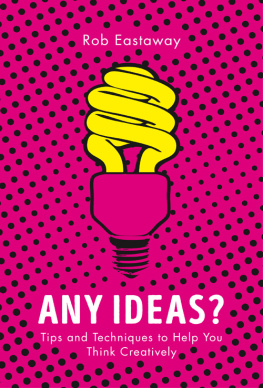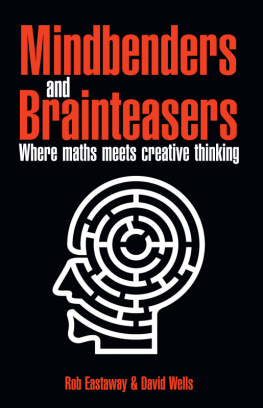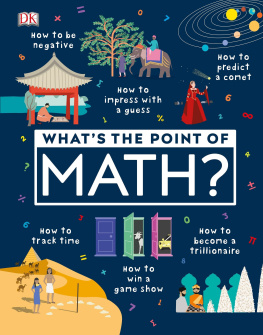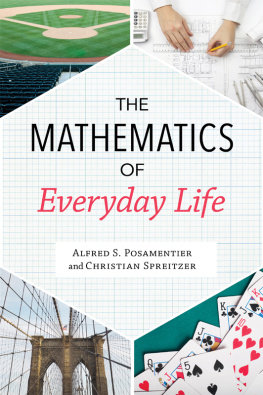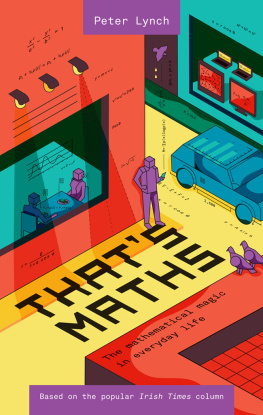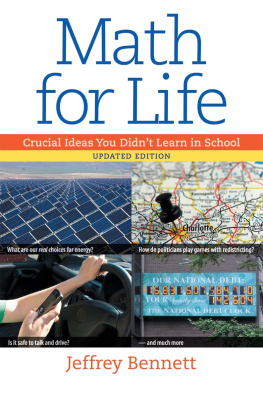More great titles from Pavilion gift & humour
Join our newsletter here
Tap on the titles below to read more




www.pavilionbooks.com
how long is a piece of string?
By the same authors
What Is a Googly? by Rob Eastaway
Why Do Buses Come in Threes? by Rob Eastaway and Jeremy Wyndham
How to Take a Penalty by Rob Eastaway and John Haigh
Mindbenders and Brainteasers by Rob Eastaway and David Wells
how long is a piece of string?
More hidden mathematics of everyday life
ROB EASTAWAY
AND JEREMY WYNDHAM
Illustrations by Barbara Shore

Published in the United Kingdom by
Pavilion gift and humour
10 Southcombe Street
London
W14 0RA
An imprint of Pavilion Books Group Ltd
Copyright 2002, 2005, 2013 Rob Eastaway & Jeremy Wyndham
First published in Great Britain in 2002
The moral right of the author(s) has been asserted.
All rights reserved. No part of this publication may be reproduced, stored in a retrieval system, or transmitted in any form or by any means electronic, mechanical, photocopying, recording or otherwise, without the prior written permission of the copyright owner.
First eBook publication 2014
eBook ISBN 9781909396616
Also available in paperback
Paperback ISBN 9781861056252
Illustrations by Barbara Shore
The print edition of this book can be ordered direct from the publisher at
www.pavilionbooks.com, or try your local bookshop.
CONTENTS
How the numbers of the moon combined to make our week
Tricks and scams that make people part with their money
Patterns and variations that everyone likes
How to squeeze things in or keep them apart
How to make the big decisions in game shows
How to reduce waiting times for lifts
The curious world of fractals
Unpredictability and chaos
Epidemics and how they spread
The formula behind the taximeter
The chances and choices behind coupling up
Number tests that can detect the fraudsters
The maths behind memorable sporting moments
How waves and fractions make good and bad harmony
The art of proving things
How spin doctors conjure with figures
ACKNOWLEDGMENTS
Part of the fun in writing a book like this is that it brings you into contact with people you would never otherwise have met. These included, for example, Derek Smith, lift guru at the company Otis, who was able to demystify the curious logic of the elevator; Richard Forsyth at Luton University, who is an expert on identifying the authorship of manuscripts; and Pauline Matkins, the fount of knowledge on taxi fares at Transport for London. All went out of their way to help us.
We also received generous time and help from some friends in the world of popular mathematics: John Haigh of Sussex University, David Singmaster the international puzzle master, and the curious and interesting David Wells. Thanks also to John Bibby and co. at Count-On for your support, and to Toni Beardon and the team at NRICH.
In topics ranging from measles to music we are indebted to Matt Keeling, Chris Healey, Richard Harris, Simon Pattinson, John Treleven, Ronny Peikert, Tony Lewis, Keith Still, Nigel Rees, Ken Baker, Andrew Masraf, Gordon Vince, Peter Barker, Alun Evans, Barry Leventhal, Craig Dibble, Colin Aitkin, Jim Bates, Paul Mills and Tim Jones for their expert input. And this book would be almost unrecognisable in its finished state if it werent for the feedback from Martin Daniels, David Rogerson, Helen Nicol, Chas Bullock, Hugh Jones, Charlotte Howard, Steven Barsky, Louise Hunt and David Flavell. Any errors that remain in the book are down to our failure to take heed of the Lincoln Index ().
The multi-talented Barbara Shore once again excelled herself in converting abstract notions into delightful illustrations.
Finally, thanks to Elaine and Sarah for their devoted support throughout.
INTRODUCTION
Imagine if your school timetable had offered the following optional topics.
Monday: | How to avoid being ripped off |
Tuesday: | Thinking games |
Wednesday: | Tips for highly paid jobs |
Thursday: | Patterns in the real world |
Friday: | When to take a chance |
No doubt you would have chosen at least one of these options, and maybe all of them. And yet, without stretching reality too far, that is exactly how your timetable could have looked. Its just that some administrators decided to call each of these topics mathematics. Then, to be certain that all the fun was squeezed out, they made as much of the subject as abstract and detached from the real world as they could.
The result was that while a few children thrived, most spent hours ploughing through exercises that they found tedious and irrelevant. Sir, why do we need to know about Pythagoras? Dont be impudent, Perkins.
Fortunately, times have changed. Those wishing to engage the public in maths now appreciate that the way to do it is not to start with the theory, but to start with examples in the real world that touch peoples lives. Much of maths is about abstract ideas, but for the vast majority of people it is accessible only if it can be understood in a context they are familiar with.
Today, for all sorts of reasons, it has become fashionable in some Western cultures to describe people as sad for taking an interest in mathematics. Yet give us a topic that we care about, and we all become mathematicians. One of the most creative minds in history, Leonardo da Vinci, asked questions about everything he saw, and then investigated the answers. He was an artist, but arguably he was even more a scientist and a mathe -matician. As far as we know, nobody called Leonardo a nerd (or its Italian equivalent).
This is our second compilation of everyday maths. Once again, we have drawn from a broad range of topics that caught our interest. Our main criterion for including something has been that it kept us entertained in the pub. Some topics will be familiar to those well read in this field, but others such as lifts, taxi fares and the logistics of the gentlemens urinal have had little if any public airing before now.
As with Why Do Buses Come in Threes? you will find some parts easy reading while others require more careful thought. As it happens, certain themes crop up more than once in the book. Chance, reasoning and patterns feature prominently. In fact if the syllabus at the start of this introduction really existed, perhaps this would be a book that accompanied it. But this isnt meant to be a textbook: it is to be read at leisure and, we hope, with enjoyment.
WHY DOES MONDAY COME ROUND SO QUICKLY?
How the numbers of the moon combined to make our week
Next page

